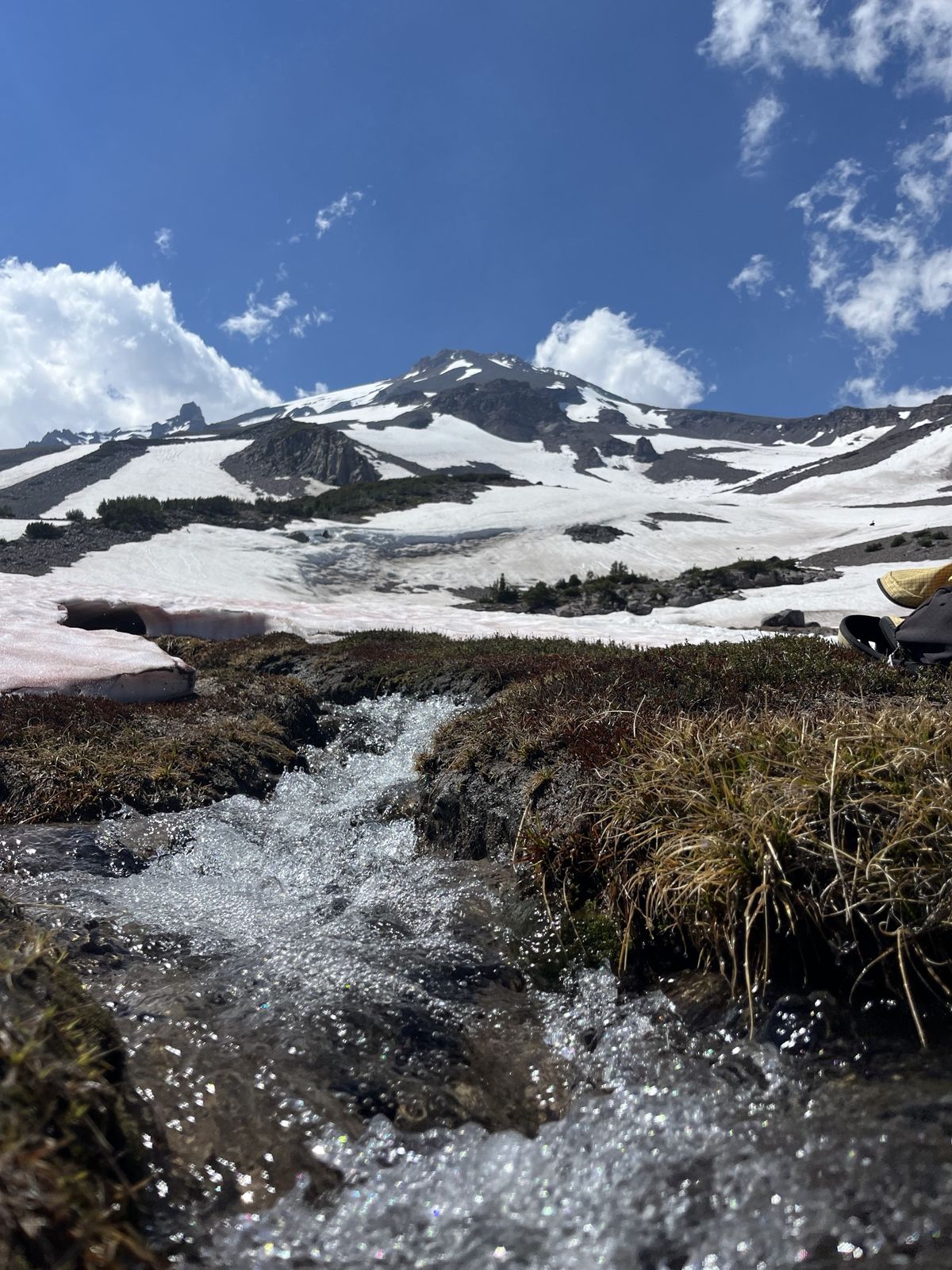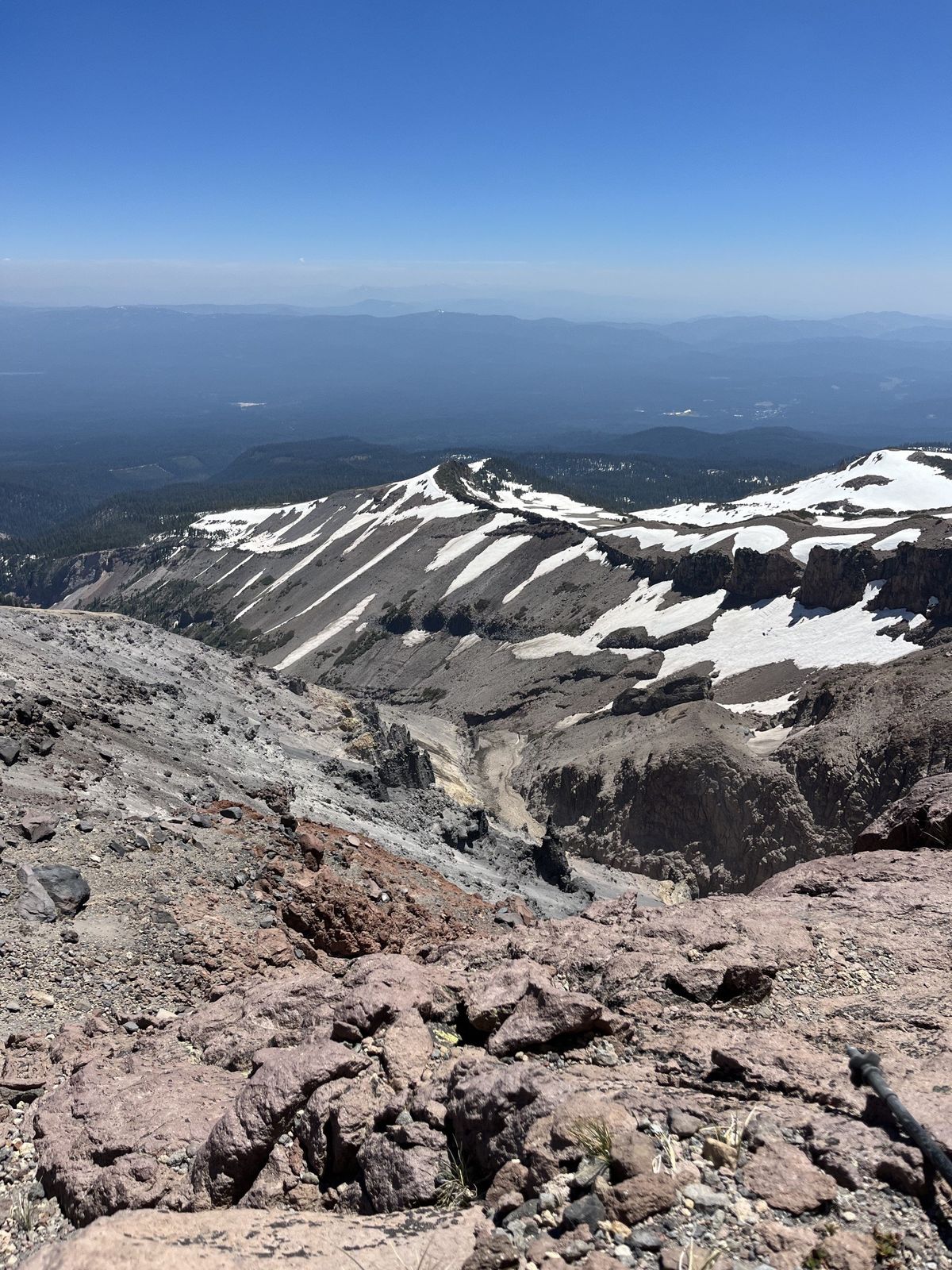Off the Grid: Summits are not the only success
Mount Shasta towers over a rushing stream on its lower slope. (Ammi Midstokke / For The Spokesman-Review)Buy a print of this photo
As I grow older, I am coming to appreciate different measurements of success. Sometimes winning is just staying alive. Sometimes it is the view.
According to my grandmother, it’s winning a nickel at Bridge Club.
Somewhere around 9,000 feet on the moonscape slope of a volcano, a team of climbers is descending, each member with an almost threatening frown of disappointment and exhaustion.
Fatigue and air hunger make for a bad mood. Failing to summit, apparently, more so.
They’ve likely been up since one in the morning and climbing nonstop for hours.
Their bags are loaded and they’re wearing the heavy boots and helmets of mountaineers.
I can’t tell if their expressions as they raise their down-turned faces toward me are disdain, disgust, or jealously. My pack weighs 5 pounds.
I’m wearing shorts and trail runners.
My only equipment is a pair of ultralight trekking poles that click-clack as I trod my way up the intermittent snow and rock.
Clearly, I’m not taking this mountain serious enough.
They tell me they turned around 1,000 feet shy of the summit.
I can tell that only one of the party was uncomfortable, and they had agreed to stay together.
These are the corrosive (but safe) contracts between friends and outdoors partners in the mountains.
I have been the person who raised a white flag mere yards away from a summit and I have borne the frustration and disappointment of my climbing partners.
I don’t feel sorry. Because, we are still alive.
As far as I’m concerned, that is the definition of a successful adventure.
We pass another group of Italians which had a defined turn-around time and also failed to reach the summit. Members wondered if they should have tried anyway.
They were tired and happy.
The summit is only one part of their grander adventure.
Is there a difference between spending 12 hours climbing a volcano or spending 11 hours climbing a volcano? Either way, the view is incredible.
The first time I climbed and summited Mount Shasta, the best view was when the sun rose.
I was clambering up a steep incline aptly named Misery Hill (I believe most mountains have a section titled this), freezing in the icy blast of wind that came over the ledge, when the sun rounded the curve of the earth behind me.
It cast the mountain’s purple-hued shadow in a perfect triangle, stretching across the landscape and far into the Trinity Alps, toward the Pacific Ocean.
In that view came the promise of impending warmth.
I turned and plodded upward until the sun hit my face and with an immediate breath of grace, relieved me of chill.
I recall this moment of sunrise as almost spiritual.
I remember the view from the summit, a kind of exposure of perspective, but it is not my fondest memory of that trip. Summits are the wide-angle lens of geography, but to not reach the summit is by no means a waste of a journey.
I wanted to tell all the disappointed climbers this as they descended past me.
“Are you just day-hiking?” they asked, mostly because they could not stomach the possibility that one might scoot up to the top in shorts and trail runners (though many have).
Just day hiking.
Our propensity to extremism is not healthy for society or us as individuals.
The day-hiker has no diminished quality of experience.
Neither does the park-walker or sidewalk-stroller.
How often do we miss the journey by focusing on a finite point of it – figurative or literal?
Halfway up the mountain, we veered off the beaten path to the top and scurried through loose moraine, washed down by millennia of seasons.
Heading southwest far below the summit, we came to the great chasm of Mud Creek: A violent gauge in the soft slope of Mount Shasta that recently suffered a catastrophic ice dam break.
The whole canyon opened up in a torrent of mud, rock and ice that decimated the forests below in a gushing of mountain innards that wiped out trees, roads and bridges miles below before settling in a spread of gray-brown sludge on the flats below.
We parked ourselves on an outcropping of red rocks and stared down at the charcoal black hoodoos, standing like strange mountain ghosts deep down in the canyon.
How did they survive the cataclysmic explosion of rock and ice?
The massive scale of this place is so humbling, we just take it in and let the fragility of our tiny human bodies rattle our minds a little before turning back.
As we rounded the mountain, some friendly climbers waved and yelled to us. I couldn’t hear them in the wind and so I climbed a little to approach them.
“There’s a trail here,” they said as I arrived. They thought I was lost (which would be more offensive if it were not a hobby of mine).
For why would anyone stray from a trail? Why would anyone not go as far up as possible before turning around out of necessity?
On our way down, we paused at a rushing stream that emerged from the snow and babbled through the thick moss.
It smelled like the peat of Irish moors.
We took turns doing push-ups over the brook, burying our faces in the ice-cold, glass-clear water and drinking our fill straight from its flow.
It was the most refreshing reminder of the treasures to be found out here and we giggled and sighed like excited children.
Trails are not the only way to the good places.
Wandering, exploration, discovery and downright contemplative picnic breaks are the substance of a successful outing.
The bonds of friendships, the new understandings of self, the moss growing on the north side of trees, the sound of a new bird, or a mere moment of reprieve from the incessant bludgeoning of modern life are all successes of our outdoor excursions.
Don’t be fooled into thinking the prize is only found at the end. Or the top.
Ammi Midstokke can be contacted at ammimarie@gmail.com.

